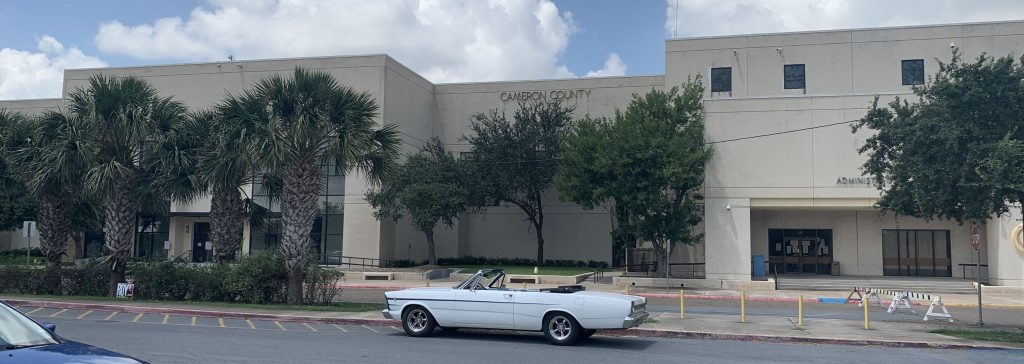This was our one hundred-ninety-seventh Courthouse in Texas to visit. That means we are at 77.6% of our goal with 22.4% left to go.
This classically styled public building has been central for Cameron County government for nearly a century. Texas and Mexico both claimed this area after 1836. The Texas Legislature created Cameron County in 1848, even before the land was officially made part of Texas and the U.S. by the Treaty of Guadalupe Hidalgo.
Named for Scottish-born Ewen Cameron (c. 1811-1843), a soldier killed during the Mier Expedition, the county was one of the largest in the state until additional counties were later carved from its territory. Santa Rita (5 mi. NW) was the first county seat before voters chose Brownsville in Dec. 1848. For a generation there was no formal courthouse, as county officials conducted business in homes and rented commercial space.
Cameron County built its first courthouse in 1882-83 at 1131 E. Jefferson, conducting business there for thirty years before the Rio Grande Masonic Lodge AF&AM No. 81 bought the building. In October 1911, citizens of the growing county voted 1058-148 in favor of a new $200,000 courthouse. San Antonio architect Atlee B. Ayres (1873-1969) designed this building, as well as a new county jail at 1201 E. Van Buren, and both county buildings were completed in 1913. The Classical Revival style rectangular cross axial plan courthouse is three stories with an elevated basement. The brick exterior features banded ground floor courses, Corinthian columns and pilasters, a dome and a classical parapet with terra cotta trim. The interior is notable for its octagonal rotunda and elaborate art-glass dome. When the county built a new courthouse in 1981, this site remained for county offices and was renamed the Dancy Building for Oscar C. Dancy (1879-1971), who served 48 years as county judge within these walls from 1921-33 and 1935-71.
Recorded Texas Historic Landmark – 2000

